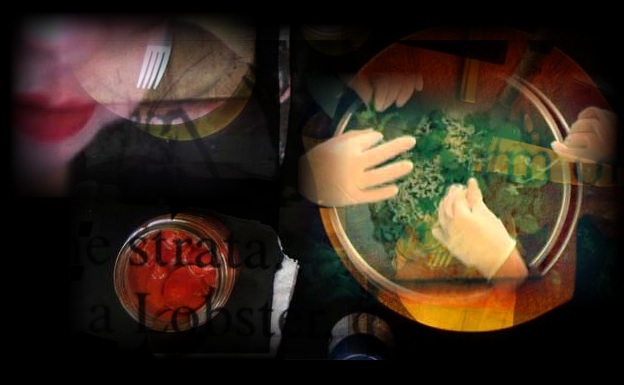Menu for a Metrophagus
A windy Monday evening, 11 May, Amsterdam. 18 guests ate their way through a 4 and a half course metrophagic menu from Morass Bouillabaisse to Hawthorn blossom panacotta. The meal was part of the urban convivium Whats Eating Amsterdam? Plants, florets, eel and crustaceans sourced in and around Amsterdam were transformed with the help of chef-wunder Sander Overeinder into a toothsome feast.
To begin, the 1/2 course: an appetiser / amster-guele of roasted eel chunks with a blob of wild garlic leaf paste, a bayleaf and a squidgeon of lemon. Eel was caught by fisherman Piet Ruyter in the Petroleum and Mercurius harbours in the Ij water just north-west of central station, the wild garlic leaf came from Sloterpark (a stone’s throw from President Allende lane), bayleaf from a tree abutting Beatrix park, and lemon arrived from not sure where.
First course: Morass bouillabaisse featuring the Chinese Mitten Crab, eel (again), and an infusion of swamp mint.
Second: A plate of greens, yellows, purples, blues and whites made of linden leaves, forget-me-nots, flowers of charlock, hawthorn leaves, ox-eye daisy buds, deadnettle flowers (extraordinarily rich in nectar), comfrey flowers (idem about the nectar), wild marjoram, garlic-mustard plant — the sharp horseradish taste of the leaves and roots of the garlic mustard plant makes a piquant dressing. The linden leaves come from Sloter zone and were picked still young enough to be nutty, soft and easily chewable. Forget-me-nots from near the railway tracks shortly before Sloterdijk. The Charlock (family of the mustard, Sinapis arvensis) comes from Oosterringdijk, east Amsterdam. The hawthorn leaves are another Sloter specimen — these were taken from a hedge well before it’s bloom. Ox-eye daisy buds came from a secluded patch adjacent to the volkstuinen west of Westerpark. Deadnettle came from near the St Barbara cemetry, Amsterdam Westerpark. Comfrey flowers from Slotermeer. And the garlic mustard plant also from the Sloter zone.
Third: Stinging, Sticky risotto with tails of Louisianna crayfish topped with sautéed roadside thistle. Masses of nettle (stinging nettle, deadnettle picked from the Science park terrain, an involuntary hortus conclusus skirted by the Amsterdam A10. The crayfish are the river cray, american emigrées, as described in crustacean canalbilism. The roadside thistle was a beautiful discovery for us, their peeled stalks and spikey flower buds soften when boiled flaunting a burly taste of artichoke-asparagus.
And fourthly but not leastly: Hawthorn blossom pannacotta. Milk infused with thousands of tiny blossoms from the hawthorn shrub, giving a tanininc almond taste. Hawthorn is a shrub of the rose family, but comes into bloom in May (hence the name in Dutch, Meidoorn, Maythorn).
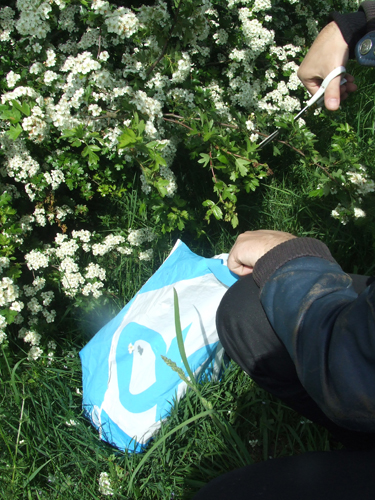
Harvesting the hawthorn flowers for the panacotta
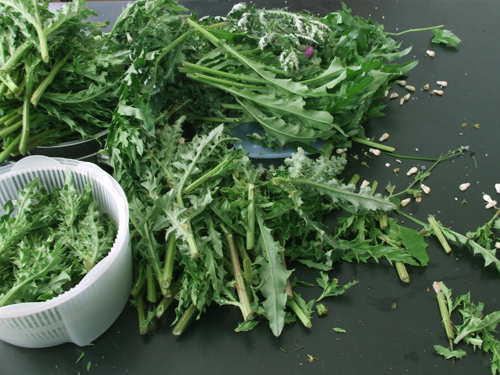
Thistle, thistle, thistle on the menu
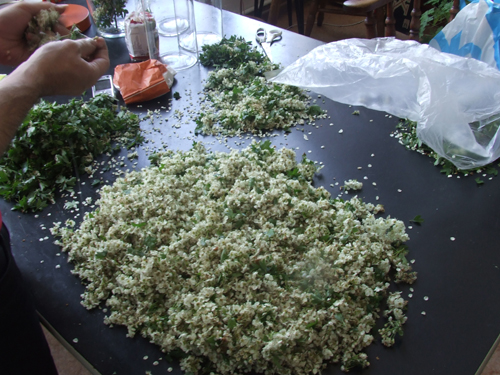
Separating the hawthorn flowers from the stems
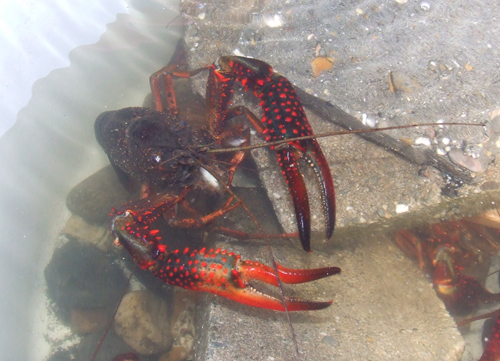
Cray eating last slice of garlic
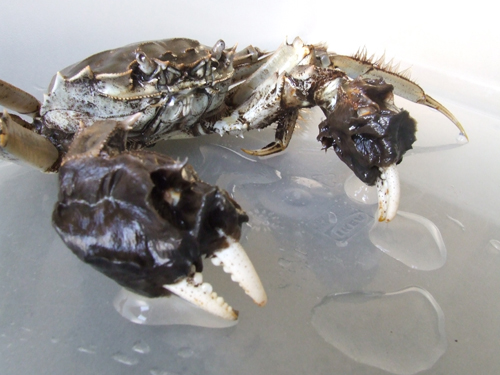
One of the many mighty mitten crabs used for the bouillabaisse
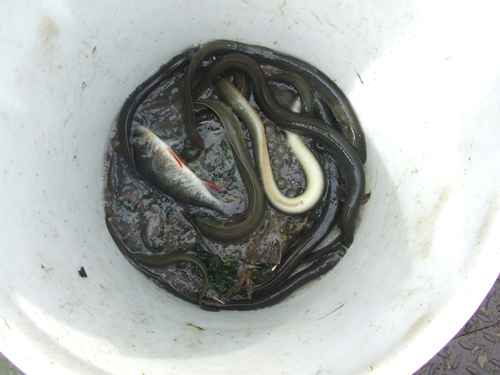
Eel and other fishes fished from the Ij, 9 May
